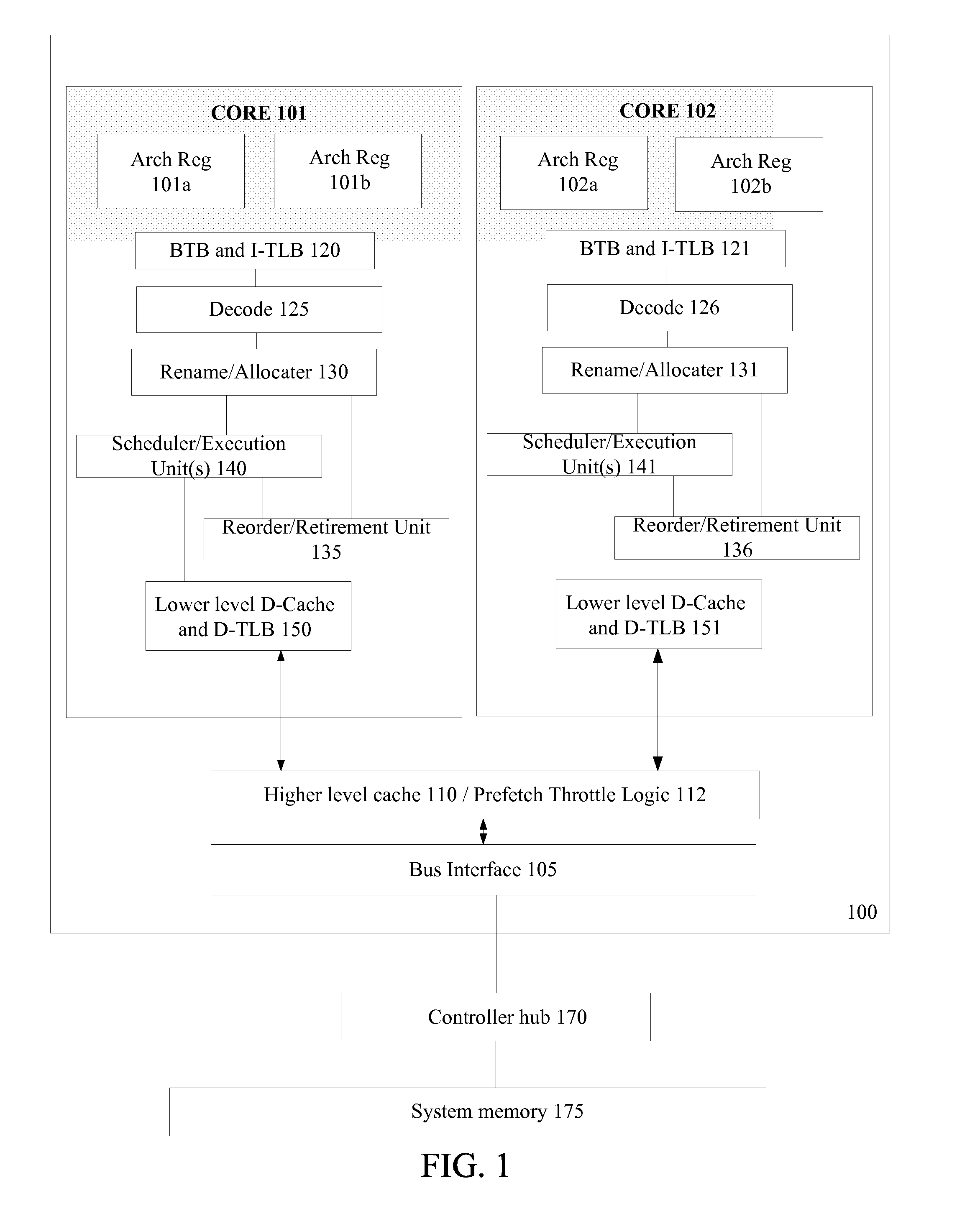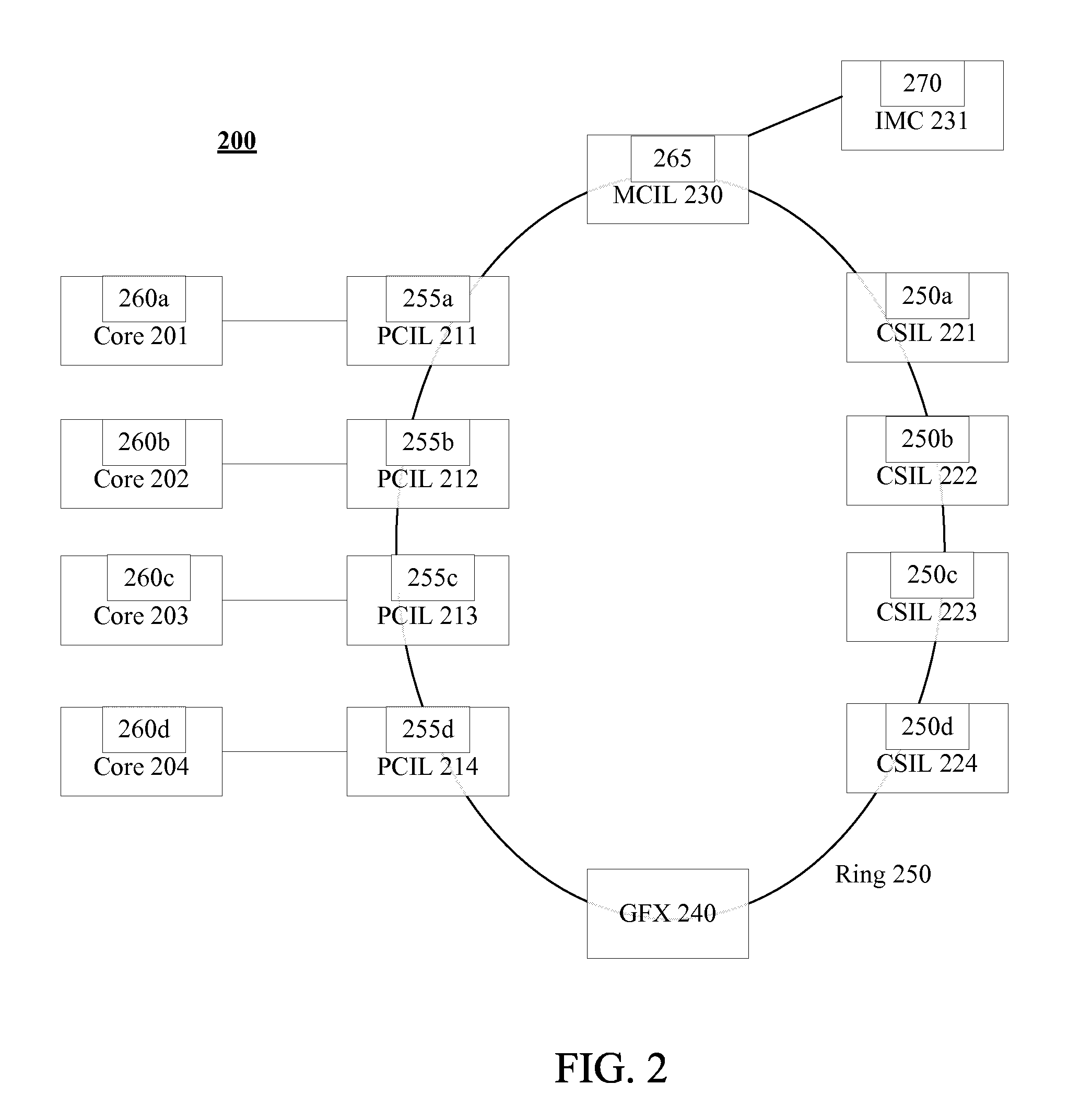Mechanisms to avoid inefficient core hopping and provide hardware assisted low-power state selection
a technology of low-power state selection and core hopping, applied in the direction of instruments, computation using denominational number representation, register arrangements, etc., can solve the problems of inability to intelligently choose when to core hop, inability to optimize processor operation, and increased thermal density and leakage power,
- Summary
- Abstract
- Description
- Claims
- Application Information
AI Technical Summary
Problems solved by technology
Method used
Image
Examples
Embodiment Construction
[0016]In the following description, numerous specific details are set forth such as examples of specific hardware structures / mechanisms for idle-activity prediction, idle duration measurement, accuracy determination; specific processor configurations, specific core hop conditions, specific low power states, specific processor units / logic, specific examples of processing elements etc. in order to provide a thorough understanding of the present invention. It will be apparent, however, to one skilled in the art that these specific details need not be employed to practice the present invention. In other instances, well known components or methods, such as specific and alternative multi-core and multi-threaded processor architectures, specific logic circuits for illustrated modules / blocks, and specific operational details of microprocessors, have not been described in detail in order to avoid unnecessarily obscuring the present invention.
[0017]The method and apparatus described herein ar...
PUM
 Login to View More
Login to View More Abstract
Description
Claims
Application Information
 Login to View More
Login to View More - R&D
- Intellectual Property
- Life Sciences
- Materials
- Tech Scout
- Unparalleled Data Quality
- Higher Quality Content
- 60% Fewer Hallucinations
Browse by: Latest US Patents, China's latest patents, Technical Efficacy Thesaurus, Application Domain, Technology Topic, Popular Technical Reports.
© 2025 PatSnap. All rights reserved.Legal|Privacy policy|Modern Slavery Act Transparency Statement|Sitemap|About US| Contact US: help@patsnap.com



